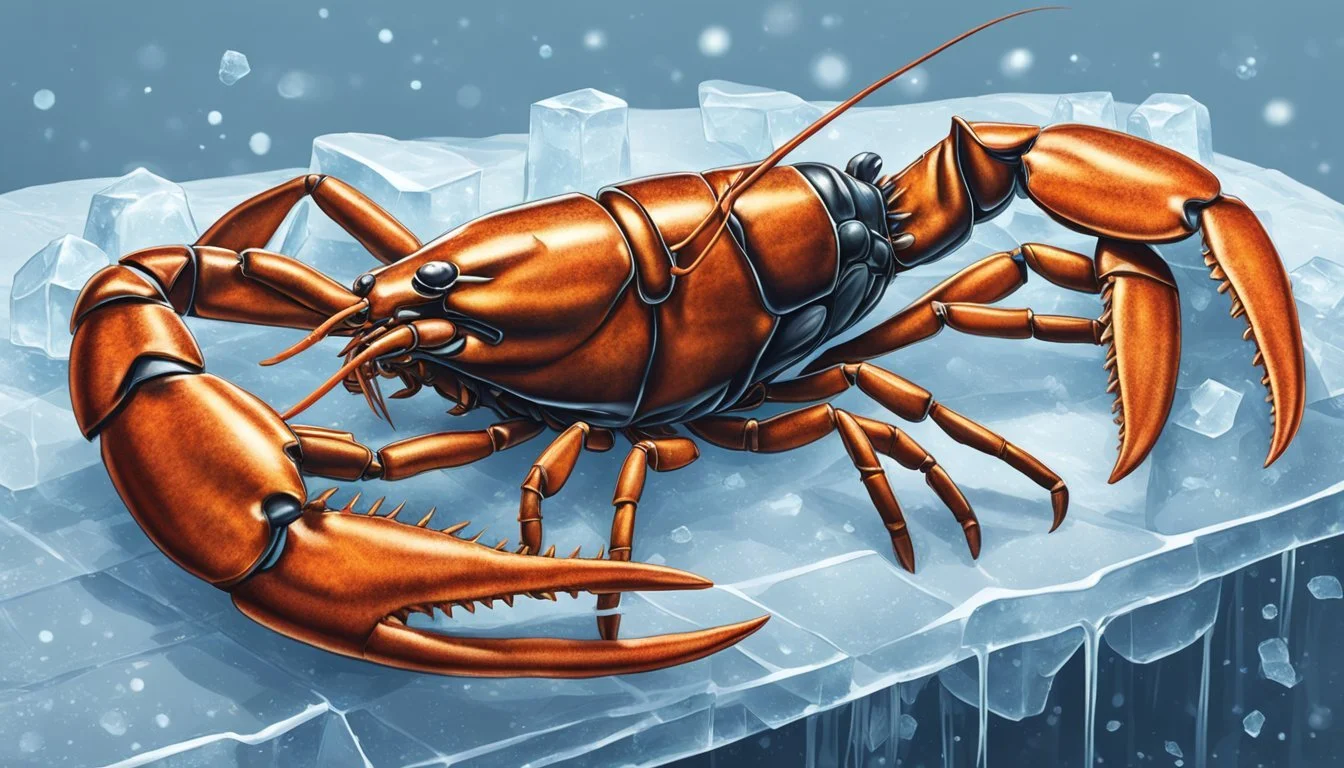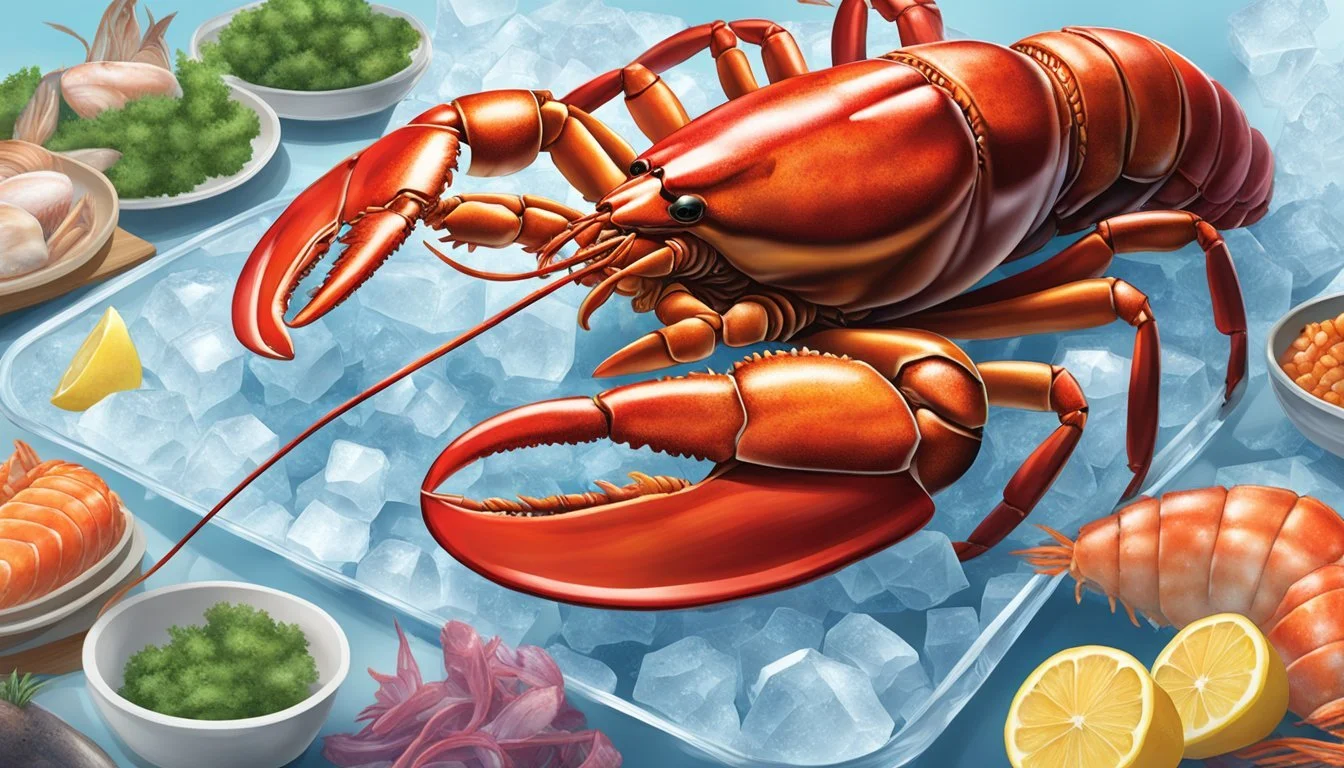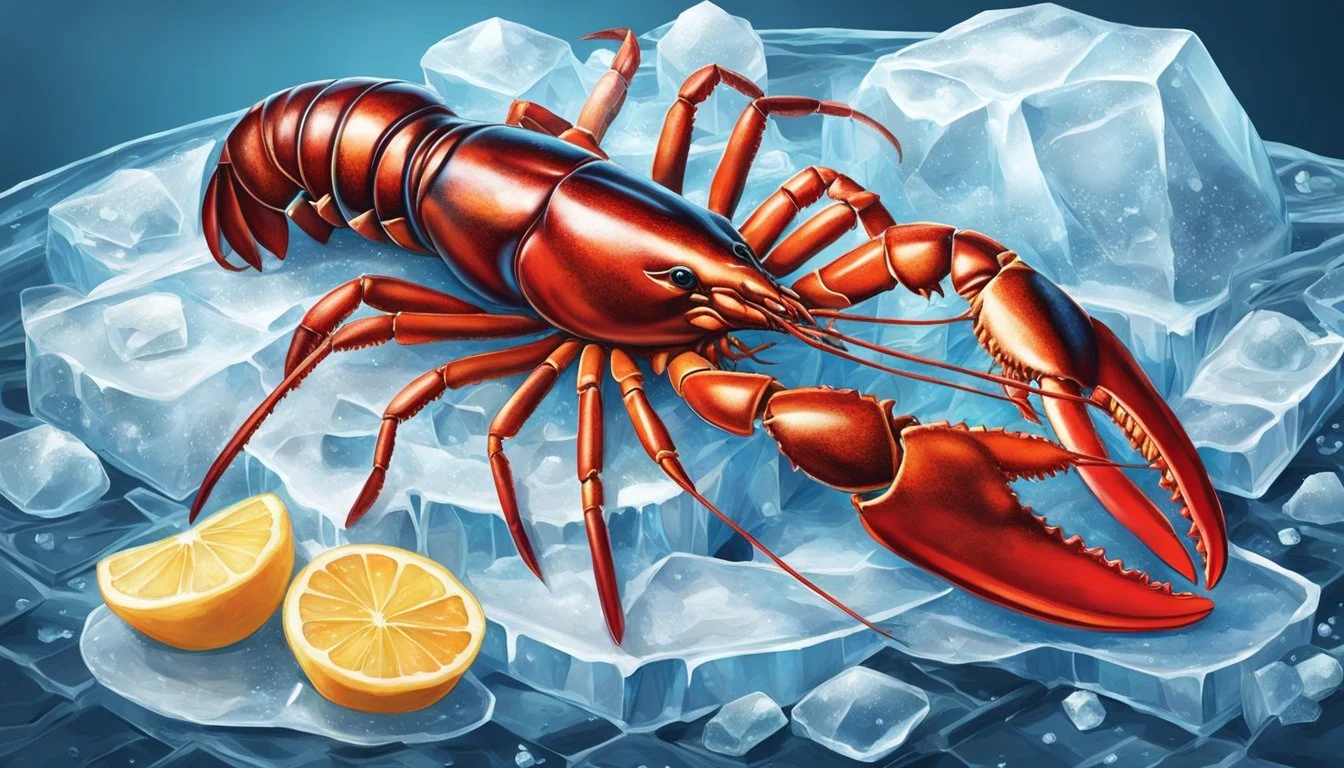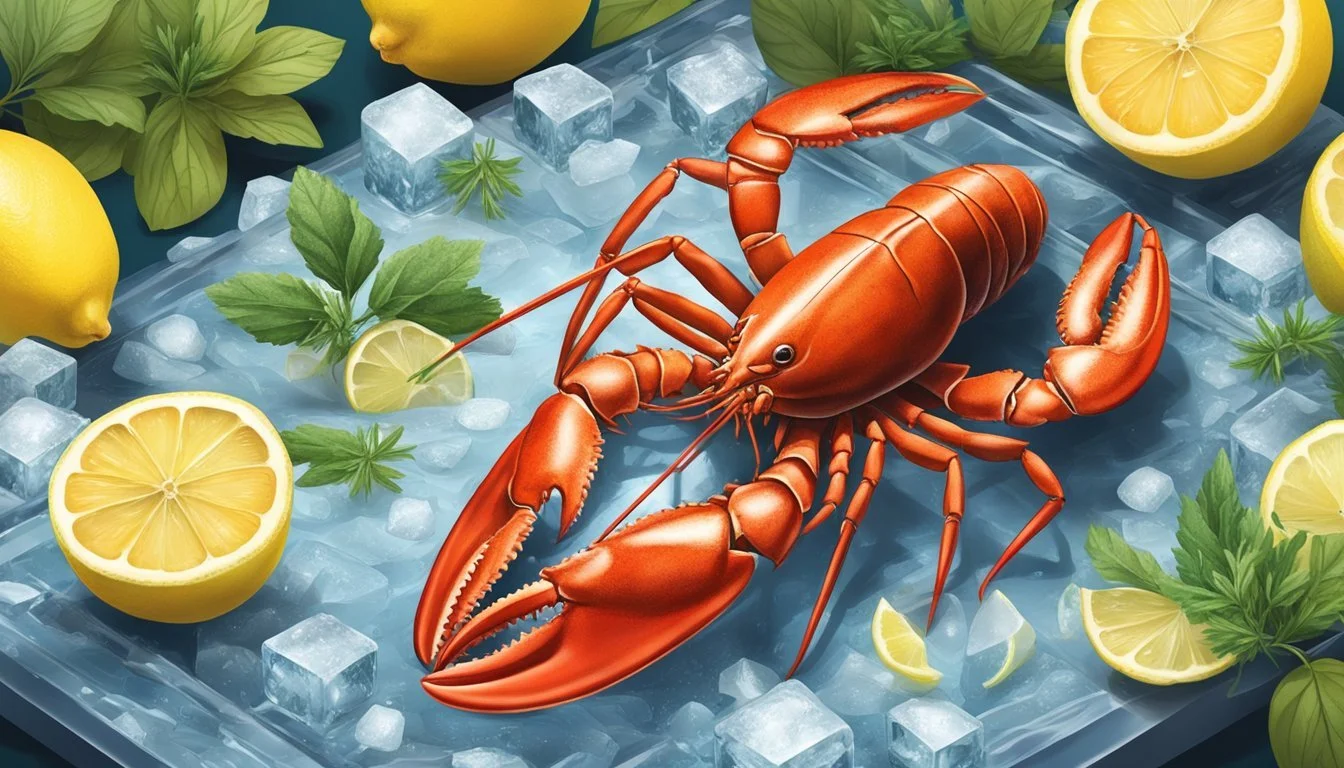How Long Does Lobster Last?
Shelf Life and Storage Tips
Lobster (What wine goes well with lobster?) is a delicacy often enjoyed for its rich, succulent meat. Knowing how to store lobster properly is crucial to maintaining its quality and ensuring its safety for consumption. Lobster can be purchased live, cooked, or uncooked and frozen, each state requiring different storage methods.
When purchasing live lobster, it should be kept in the refrigerator and consumed within 1-2 days. They should be stored in a breathable container, such as a cardboard box, with damp newspaper or seaweed to keep them moist. In contrast, cooked lobster stored in the refrigerator should be placed in an airtight container and can be safely eaten within 3 days.
Uncooked thawed lobster from the freezer has a best quality shelf life of 3-6 months; when storing it, ensure it is fully submerged in cold water within a sealed container. Following these guidelines will help guarantee the enjoyment of this premium seafood at its finest.
Identifying Fresh Lobster
When selecting lobsters, consumers should pay attention to several key indicators that signal the quality and freshness of the crustacean.
Characteristics of Fresh Lobster
A fresh live lobster typically exhibits a lively and responsive demeanor. Upon gently probing, it should react swiftly, with its tail curling under its body and its antennae actively moving. These lobsters usually have a naturally vibrant deep blue or greenish hue depending on the species. The meat of a fresh lobster, when extracted, should be creamy white in color and possess the subtle, clean smell of the ocean.
Body Movement: Quick reflexes and motion when handled.
Color: Deep blue or green hues; creamy white for the flesh.
Odor: A fresh scent that resembles the sea.
Fresh soft-shell lobsters, which have recently molted, may be more delicate and lighter in weight, but should still show signs of vigor. On the contrary, a hard-shell lobster signifies one that has not molted recently and tends to have a fuller body consisting of more meat. While soft-shell lobster may have a sweeter taste and tender texture, hard-shell lobsters are usually considered to have better overall quality and a longer shelf life.
Prime Conditions for Freshness
For live lobsters to maintain their freshness, they must be kept under prime conditions that closely mimic their natural environment. These include being stored in a cool, moist setting such as a refrigerator, ideally between 38-45°F (3-7°C), and in a breathable container lined with damp newspaper or seaweed to keep them moist.
Temperature: Between 38-45°F (3-7°C) for live lobsters.
Environment: Moist, similar to their natural habitat.
Container: Breathable with damp newspaper or seaweed.
By following these guidelines, live lobsters can remain fresh for approximately 24-48 hours under optimal conditions. Freshness directly impacts the flavor and quality of the lobster when cooked, so proper handling and storage are critical from the moment of purchase until preparation.
Storage Fundamentals
Proper storage is critical for maintaining the freshness and extending the shelf life of lobster. An understanding of refrigeration strategies, freezing techniques, and ideal container choices is essential for preventing spoilage.
Refrigeration Strategies
When refrigerating lobster, maintaining a consistent storage temperature between 32°F (0°C) and 40°F (4°C) is paramount. Live lobsters should be placed in a ventilated container and covered with a damp newspaper or seaweed to ensure adequate moisture without submersion in water. They can last for 24 to 48 hours in these conditions. Cooked lobster must be removed from the shell and stored in an airtight container in the fridge, where it can last for up to three days.
Freezing Techniques
For longer-term storage, freezing is an option. Uncooked lobster can be kept in the freezer for 3-6 months with optimal quality if placed in a sealable plastic bag or wrapped with plastic wrap to prevent freezer burn. Cooked lobster should be treated similarly, with thorough wrapping in plastic wrap or aluminum foil then placed in an airtight container or sealable bag.
Container Choices
The choice of container contributes significantly to the shelf life of lobster. For refrigeration, airtight containers are preferred for cooked lobster to prevent contamination and odor absorption. In contrast, live lobsters require a breathable container, such as a cardboard box, with a layer of damp newspaper or seaweed, not sealed to allow for necessary air exchange. When freezing, use airtight containers or sealable plastic bags designed for freezer use to protect against dehydration and quality loss.
Shelf Life of Lobster
The shelf life of lobster varies significantly depending on whether it is raw or cooked. Proper storage is paramount to prevent spoilage and ensure the lobster remains safe to consume.
Raw Lobster Longevity
Live Lobster (Refrigerator): Typically lasts for 1-2 days. It should be kept in a breathable container, such as a cardboard box lined with damp newspaper or seaweed, at a temperature between 32°F and 40°F (0°C and 4°C).
Uncooked Thawed Lobster (Freezer): For best quality, consume within 3-6 months. The lobster should be completely submerged in cold water in a sealed container while in the freezer.
Cooked Lobster Duration
Cooked Lobster (Refrigerator):
Shelf Life: Safely lasts for 3-4 days when stored properly.
Storage Method: Refrigerate in shallow airtight containers, or wrap tightly in heavy-duty aluminum foil or plastic wrap.
Cooked Lobster Meat (Refrigerator):
Removed from Shell: Can last up to 4 days, provided the refrigerator maintains a steady temperature of 34°F to 40°F (1°C to 4°C).
Cooked Lobster (Freezer):
Shelf Life: Can be extended by freezing. Store in covered airtight containers or heavy-duty freezer bags.
One should always inspect the lobster for signs of spoilage which can include an unpleasant odor, slimy texture, or discoloration before preparation and consumption.
Preparation and Cooking
When dealing with live lobsters, the key factors include humane handling, methodical cooking, and proper post-cooking processing to ensure that the lobster is safe to consume and flavorful.
Preparing Live Lobster
Before cooking, one must handle the lobster carefully to maintain its freshness and quality. It is recommended to store a live lobster in the refrigerator in a breathable container, such as a cardboard box, with damp newspaper or seaweed to keep it moist until it's time to cook. Live lobsters should not be stored in freshwater or on ice as this can kill them.
Cooking Methods
There are several methods to cook a lobster, each bringing out a unique flavor and texture.
Boiling: Boil water in a large pot with salt. Once the water is at a rolling boil, gently place the lobster in the pot. The cooking time varies based on the lobster's size, usually 7-14 minutes for a 1-pound lobster.
Steaming: Steaming is a gentler method. Fill a pot with 2 inches of seawater or salted water and bring to a boil. Place the lobsters in a steamer rack over the boiling water, cover, and steam for 15 minutes for a 1-pound lobster.
Grilling: Preheat the grill. Split the lobster down the middle, brush with butter or oil, and place on the grill flesh side down for 5-10 minutes, flipping once for a smoky, charred flavor.
Oven: Place a Maine lobster on a roasting pan, and bake in a preheated oven at 350 degrees F until the internal temperature reaches 145 degrees F.
Microwave: Although not as traditional, it's possible to cook lobster in a microwave. However, it's difficult to recommend this method as it may not provide a consistent cooking result.
Post-Cooking Handling
After cooking, one must handle the prepared lobster properly to maintain its quality. Allow the lobster to cool slightly before cracking it open. If it will not be consumed immediately, it should be stored in an airtight container in the refrigerator for up to three days. For longer storage, cooked lobster can be kept in the freezer for up to two months, ensuring it is properly wrapped to prevent freezer burn.
Signs of Spoilage
When assessing lobster for spoilage, one should look for alterations in smell, texture, and color. These can be reliable indicators of whether the lobster has gone bad and should be discarded.
Sensory Indicators
A lobster that is starting to spoil typically emits a pungent odor that deviates from the fresh, ocean-like scent associated with good quality seafood. Sour smells or a foul odor resembling ammonia are clear signals that the lobster is no longer safe to consume. It’s vital to trust one's senses; if the lobster smells off, it likely is.
Physical Changes
In terms of texture and appearance, fresh lobster meat should be firm to the touch. If the meat feels slimy or exhibits a mushy texture, this is indicative of spoilage. Visually, good lobster meat has a creamy white color, while any discoloration, particularly gray or black hues, suggests it’s time to discard the lobster. Such changes in a lobster's physical state are strong indicators that it has gone bad.
Health and Safety
When it comes to consuming lobster, understanding health and safety guidelines is crucial. Consuming spoiled lobster can lead to food poisoning due to bacterial growth, potentially causing severe health issues including vomiting and diarrhea.
Dangers of Spoiled Lobster
Spoiled lobster can harbor dangerous bacteria that pose a risk to health. Bacterial species such as Vibrio parahaemolyticus, Listeria monocytogenes, and others may proliferate in improperly stored lobster. These bacteria can cause food poisoning, with symptoms like vomiting, diarrhea, and abdominal pain. The onset of these symptoms can occur within hours of consumption and, in some cases, lead to more serious health complications if not addressed promptly.
Proper Safety Precautions
Adhering to proper safety precautions can significantly reduce the risk of foodborne illness. Below is a table outlining key safety measures:
Steps for Safety Description Thawing Thaw lobster in the refrigerator to maintain temperature control. Refrigeration Live lobster should be stored in the fridge and cooked within 1-2 days. Consumption After Death Cook lobster within two hours of death to reduce risk of food poisoning. Cooked Lobster Storage Store cooked lobster in an airtight container in the fridge for up to three days. Freezing For long-term storage, freeze uncooked thawed lobster for up to 6 months. Preparation Ensure hands, utensils, and surfaces are clean during lobster preparation.
Storing lobster in an airtight container in the fridge and ensuring it remains at a stable, cool temperature is fundamental for safety. It is optimal to consume cooked lobster within two hours of preparation to further minimize the risk of bacterial growth. In every step, from storage to preparation, maintaining cleanliness is non-negotiable for the prevention of contamination and the safeguarding of health.
Extending Lobster Quality
Maintaining the quality and freshness of lobster hinges on proper storage and reheating techniques. By adhering to best practices, one can ensure that both the flavor and texture of the lobster are preserved.
Best Practices for Storage
Live Lobster: Live lobsters should be stored in the refrigerator at temperatures between 32°F and 40°F. They require a breathable container, such as a cardboard box, lined with damp newspaper or seaweed to guarantee moisture is retained, and they should be cooked within 24-48 hours.
Uncooked Thawed Lobster from the Freezer: Lobsters that have been thawed after freezing should be consumed quickly for best quality. They can be stored for up to 6 months under ideal conditions, which involve being completely submerged in cold water within a sealed container.
Cooked Lobster in the Refrigerator:
Store in an air-tight container.
Use within 2 to 4 days for optimal freshness.
Cooked Lobster in the Freezer:
Wrap tightly in heavy-duty aluminum foil or freezer wrap.
For best quality, consume within 2 to 3 months.
Reheating Leftover Lobster
Reheating leftovers while safeguarding the lobster's delicate flavor and texture is possible with careful attention to method and timing.
Steaming: Reheating by steaming is gentle, preserving moisture and tenderness.
Place lobster in a steamer basket over boiling water.
Steam for 5-8 minutes or until heated through.
Oven:
Preheat the oven to 350°F.
Wrap lobster in foil to lock in moisture.
Heat for approximately 10 minutes.
Note: Microwaving is not recommended as it can unevenly reheat the lobster and negatively affect texture.
Additional Considerations
When storing lobster, one must not only consider the shelf life but also the impact on the nutritional value and the initial selection of the lobster to ensure premium taste and freshness.
Nutritional Information
Lobster is renowned for its high protein content, offering a substantial amount of this macronutrient with a low fat profile, which is beneficial for muscle building and repair. It also contains essential minerals such as zinc and phosphorus, and is a source of vitamins including vitamin B12. However, one should note that the nutrient integrity of lobster can degrade over time, especially if not stored correctly.
Choosing the Right Lobster
The journey to a delicious lobster meal begins with selecting the right lobster. One should look for lobsters that are active within their tanks, a sign of vitality and freshness. Ideally, one opts for lobsters sourced directly from the ocean to ensure quality. Lobster tails are often considered the most flavorful and tender part of the lobster and are highly sought after, thus sometimes making them more expensive. However, they are regarded as a delicacy for a reason, offering an exceptional taste that is both rich and sweet.
FAQs and Tips
When handling and storing lobsters, it's imperative to follow expert guidelines to ensure optimal freshness and safety. The handling process from pick up through storage can significantly affect the lobster's quality. This section provides common questions, offers expert tips, and addresses troubleshooting issues related to lobster storage.
Common Questions
How long can live lobsters be stored in the fridge? Live lobsters can be stored in the fridge for 1-2 days. They should be kept in a ventilated container, such as a cardboard box with damp newspaper or seaweed, away from direct sunlight.
What is the shelf life of cooked lobster in the refrigerator? Once cooked, lobster can remain in the fridge for up to three days when placed in an airtight container.
Can lobsters be frozen? Yes, raw lobsters can be stored in the freezer. For the best quality, they should be fully submerged in cold water in a sealed container and can be kept for 3-6 months to prevent freezer burns.
Expert Tips
Thawing Lobster: When thawing frozen lobster, it is essential to do so in the refrigerator, not at room temperature, to minimize microbial growth. Aim to cook it soon after thawing to maintain quality.
Freezing Lobster: To freeze cooked lobster, wrap it tightly in plastic wrap or aluminum foil, and use within a recommended timeframe to avoid freezer burns.
Troubleshooting Issues
Bad Lobster Meat: If lobster meat gives off an ammonia scent or has become discolored, it is a sign of spoilage and should not be consumed.
Stagnant Water: Never store live lobsters in stagnant water or freshwater, as they are saltwater creatures, and this can lead to stress and death.
Rubber Bands and Edges: When handling live lobsters, be cautious of the rubber bands on their claws and ensure they are not removed prematurely. Also, avoid placing lobsters in traps that are too small as the edges can cause injuries and stress, influencing the quality and safety of the meat.









